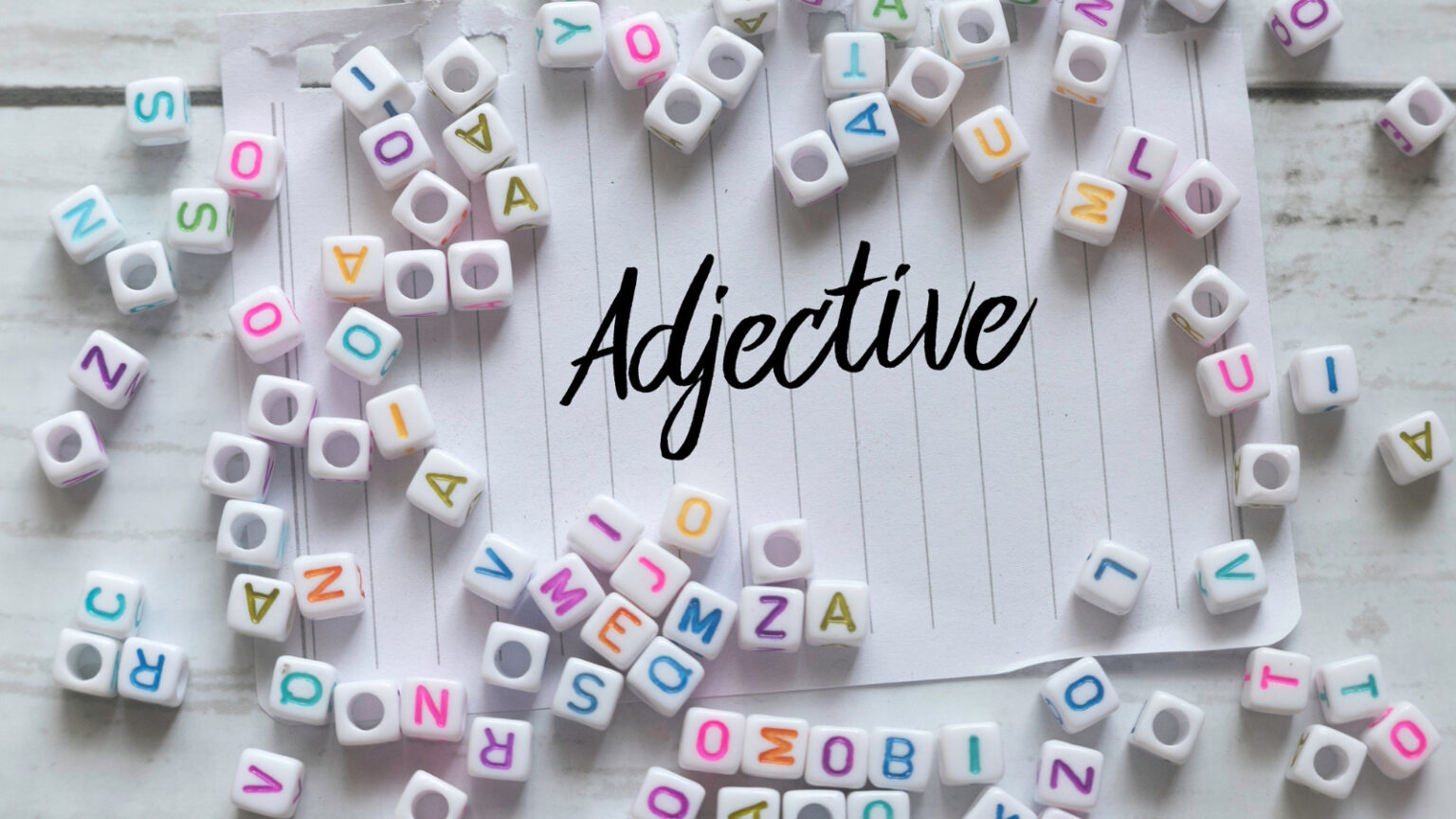Adjective Order in English Revisited
Look at this picture. How would you describe this object?
Which of these sentences sounds most correct?
- It’s a big, round, orange pumpkin.
- It’s a round, big, orange pumpkin.
- It’s an orange, round, big pumpkin.
I imagine most readers will plump for option one in describing the pumpkin. But how many will know why that option sounds right and the others so wrong?
Categories of Adjectives
The answer has to do with adjective order.
The issue pops up in my social media newsfeed from time to time. A lot of it links to an article from 2016 on the website of the Guardian newspaper (which itself links to a book by Mark Forsyth, ‘The Elements of Eloquence’).
Yes, adjectives need to appear before the noun in a certain order. We know what that order is, and there are generally very few deviations from it. The order follows a sequence of categories. This is true whether or not you know what those categories are.
But different sources suggest different categories.
Example One: Grammarly
Grammarly lists the categories like this: Quantity, Opinion, Size, Age, Shape, Color, Origin/Material, Qualifier, and then the Noun.
The guide to adjective order on the Grammarly website is a good one – it makes sense, and useful examples are offered. A few facts should be noted, however.
First, you have probably guessed by the u-less ‘color’ that the resource is American. Guidance is offered on comma usage, and for the Americans it seems that the comma is out. My pumpkin would have been described as ‘a big round orange pumpkin.’ This is not a major point, but it is worth bearing in mind as it shows that some rules (like adjective order) are universal, while others are not.
Second, two of the categories serve no purpose. Quantity is a determiner rather than an adjective, and I wouldn’t teach numbers and words like this and that in a lesson on adjectives.
The same can be said of what Grammarly has called Qualifiers, as these are really one half of compound nouns. For instance, perhaps the pumpkin in my picture was not a real one. In that case, it would be a fake pumpkin – and so you could ask yourself which of the following would be more appropriate:
- A big, round, orange, fake pumpkin.
- A fake, big, round, orange pumpkin.
If the word were fake-looking, I would agree to including it in the regular list of adjectives. But surely the essential thing is that the pumpkin is fake first of all, and so fake pumpkin is really a compound noun to which other adjectives should be attached.
Example Two: Cambridge Dictionary
The Cambridge Dictionary offering is more substantial (and returns those pesky commas to where I, and other Brits, might feel they belong).
According to Cambridge, then, the order runs as follows: Opinion, Size, Physical Quality, Shape, Age, Colour, Origin, Material, Type, Purpose, and then the Noun.
Well, that’s certainly both an exhaustive and exhausting list! The same complaint can also be levelled as regards compound nouns – do we need those last two categories when they are so definitional to the nature of the noun?
Where Does That Put Us?
But other than that, I’m pleased to have read these two guides. There are others out there – many, many others – but they are representative.
My biggest concern, though, is that neither of them would be of much use to me in my teaching. They both feel post hoc – they describe something after it has happened, rather than explaining why the choice occurs in the first place.
Teaching Adjective Order
So, are these category lists useful for teachers and their learners?
Some have tried to force some usefulness upon these systems. Mignon Fogarty of Grammar Girl fame created the useful-sounding acronym or mnemonic OSASCOMP – though I must admit I cannot find precisely what the letters refer to.
Acronyms and Mnemonics – Useful or Not?
Acronyms are not terribly useful in and of themselves – I know what scuba equipment is, but the individual letters don’t mean much to me (the full acronym is ‘Self-contained underwater breathing apparatus,’ but you don’t need to know the acronym to enjoy scuba diving).
Mnemonics, on the other hand, are designed to help: consider how readily you can place the odd-sounding name ‘Roy G. Biv.’ This handy device helps me to remember the order of the colours in the rainbow.
Unfortunately, though, it too has its limits, as I discovered at university where I studied Physics and had to get my head around the idea of wavelength and frequency and what they each meant for the separate colours.
When it comes to guides to adjective order, then, one must wonder if the acronym-mnemonic approach is the right way to go.
Searching for Sense
Personally, I don’t think it is.
Instead, I want to propose an entirely new system. Just as I needed to re-learn what the colours ‘meant’ when I arrived at university, I think it would be helpful to re-examine why we need adjective order in the first place.
For this, we should return to that old Guardian article (not, note, ‘that Guardian old article’). In it, Tim Dowling describes his discovery of the rule, but sidesteps the issue of why it exists or how it came to be. It is something ‘ingrained,’ he says – which is true for those raised in an English-speaking environment, but not much use to those learning the language.
But there has to be a sense to adjective order.
Subjective to Objective Adjective Order
My suggestion is to consider the kinds of adjective we’re looking at, not in terms of the categories they belong to, but in terms of how readily we agree to their meaning.
Let’s look at my pumpkin again. I described it as a big, round, orange pumpkin.
Is it actually big?
Well, it’s a big pumpkin, as far as pumpkins go. But it isn’t as big as my car, and I’ve seen small cars bigger than this big pumpkin. So I doubt we’ll reach much agreement on what big really means – it’s a highly subjective word. I would even say it’s the most subjective of the adjectives I have used here.
Is the pumpkin round? Well, more or less. I think you could argue for a different shape word. But compared to our agreement with big? We would agree on round more easily.
And surely we can agree that the pumpkin is orange – can’t we? It’s certainly not purple or green. There are many shades of orange, it’s true, but again, we’ll be able to reach a certain level of agreement.
Finally, let’s re-introduce the word fake. Is it a matter of opinion if the pumpkin is real or fake? We can’t tell by looking at the photo. But I took that photo. I also let my curiosity get the better of me (let’s be generous and call it research) and touched the pumpkin. I can assure you it is fake.
The Spectrum
Our adjectives, then, run along a spectrum.
At one end of the spectrum, we have our most subjective adjective.
As we approach the noun, we grow less subjective and more objective about the adjectives we use, until we arrive at the noun itself.
This spectrum idea, I would contest, will make more sense to our students, for whom the idea of adjective order is not ingrained, and probably not natural (since so few other languages that I can think of have anything similar).
We can also make our students’ lives easier, by considering a certain sense of style. How often do we really use more than two or three adjectives? What would it be like to use an adjective from every category? I couldn’t do it here – the editor would have a fit.
Two or three adjectives should generally be enough, and it’s not too difficult to get a sense of their relative subjectivity. If students can do that, they can get their adjective word order right.
Conclusions
In researching this article, I flicked through a number of (relatively) low level coursebooks in search of examples of adjective order explanations and exercises.
I came across very few.
I think most coursebooks don’t worry overmuch about adjective order, and for a sensible reason.
At the lower levels, students won’t want more than one or two adjectives at a time.
And at higher levels, students should have a better instinct for adjectives and for communicating their ideas clearly – which means keeping the number of adjectives under control.
For those still in doubt, however, I think the subjective-objective spectrum works a treat.
It also offers the bonus of giving your students something more to talk about – they will be able to consider how subjective the different adjectives are, on their own and in relation to each other.
Getting my students to have discussions like this has always been one of my favourite parts of EFL teaching, and it pleases me to have yet another excuse for one!
References
Cambridge Dictionary – Adjectives Order
Grammarly Blog – Adjective Order
The Guardian – The old grammar rule we all obey without realising
Mark Forsyth – Elements of Eloquence
Mignon Fogarty – Grammar Girl






